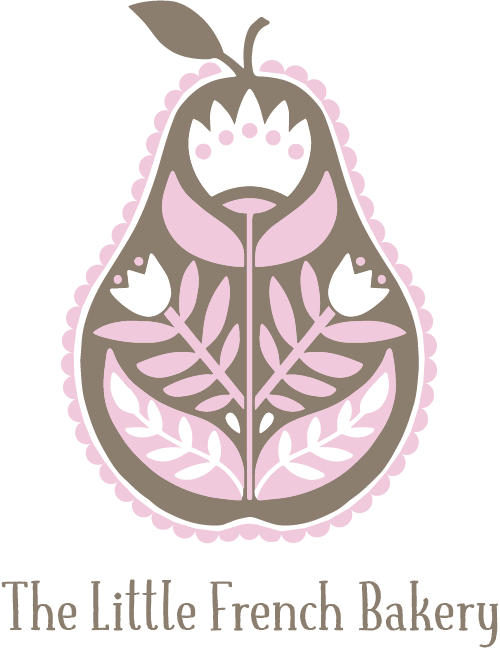Grown up flavors. Greek yogurt, Russell sprouts, spinach, rutabaga. I may need to add whole wheat bread to the list. I'm old enough to have grown up on white bread. No, not the "W" bread, but white bakery bread. We'd stop by Lanes and have a few loaves sliced for the week. I really don't remember seeing whole wheat bread until college. I can't say I loved it at first bite. My roommates and I tried to make it, and it was a much better door stop than bread. Over the years, I've grown to like it. In fact, I prefer it now. Fortunately, little kids today see plenty of whole grain breads. I'm assuming they've acquired a taste for them. I've learned the key to making is good hydration of the flour and plenty of kneading. This summer, we've been making whole wheat bread each week for the farmers' market using a recipe from the Great River Mill. Our recipe uses both whole wheat and 7 grain flour, and lots of honey. Here's another twist on whole wheat bread using whole wheat and white wheat flour.
Our Baking with Julia recipe this week is wonderful whole wheat bread. I don't want to scare anyone who might want to try this as the first bread they make. I think white bread is a little easier to start with, but this one is very forgiving and you should get good results with the recipe.
To get started, you'll need the recipe. It's in Baking with Julia, or join this week's hosts are Michele of Veggie Num Num, and Theresa of The Family that Bakes Together. Just head to their sites, and you'll find the recipe.
Now on to assembling all the ingredients. You'll need both all-purpose and whole wheat flour. I'm crazy about Great River Milling Company. It's here in Wisconsin near La Crosse. You can go to the mill and pick up big bags, or better yet, you can have it sent to you via Amazon. They have it set up so the shipping is free for the 25# bags. I'm not getting a commision, promise! The Great River Whole Wheat flour is organic and a perfect texture. If you don't have the time or inclination to use this flour, pick up a bag of whole wheat flour at your local grocer. For the all-purpose flour, be sure that it's unbleached and unbromated.
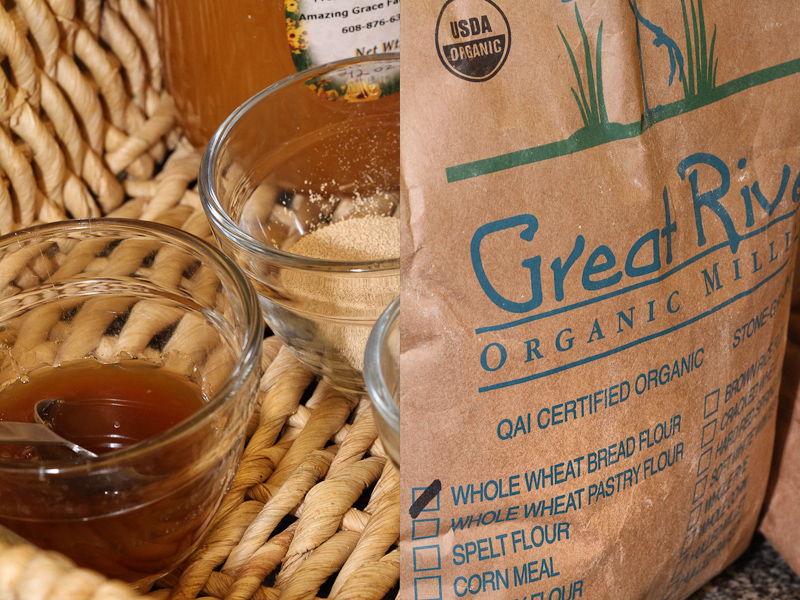
The recipe also calls for malt syrup, commonly used in brewing. If you can't find it, you can use molasses, corn syrup, or just skip it. The aroma is wonderful and it helps to condition the dough. Look at the gorgeous color!
The dough will go together very nicely. Remember, that adding water to flour creates gluten. Gluten is the structure that holds the CO2 the yeast gives off as it metabolizes the sugars in the dough. Kneading and rest develop the gluten. Be sure the check that you've got good gluten develpment by gently stretching a small piece of dough. You should see a translucent "window" of dough. If the dough rips, rest the dough, then keep kneading.
I used my kneading machine for about 4 minutes, then rested the dough (autolyse), added the salt and finised kneading by hand. I added about 1 cup more water than the recipe called for . I like to work with dough that has more hydration. You'll find the perfect hydration for you. I'm sure the recipe will work well as written.
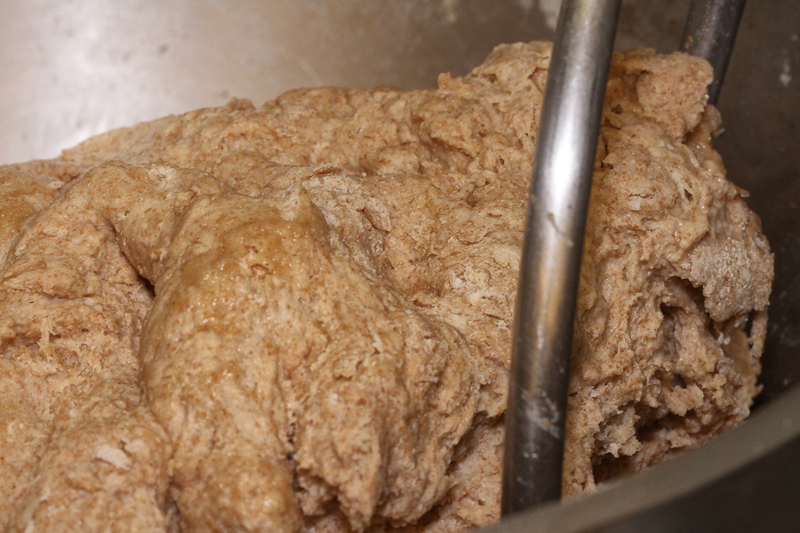
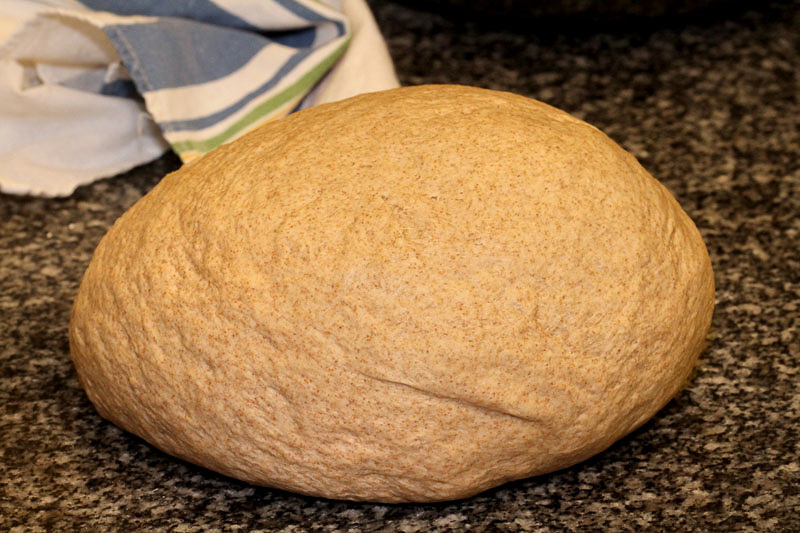
The dough rose according to the schedule and shaped easily into the pans. I made a double batch so I had four loaves, each weighing about 775 grams or about 1.7 pounds. Good hearty loaves!
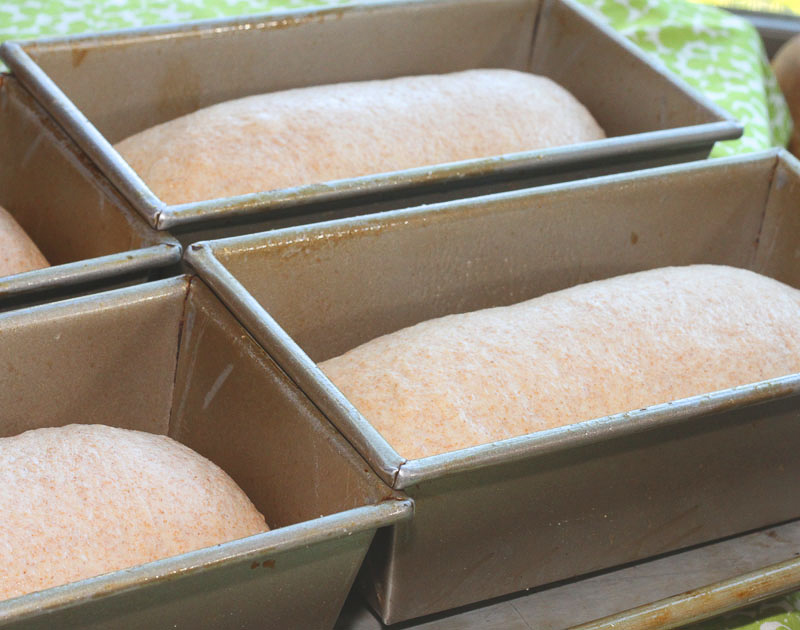
After an hour, and bread had risen to about 1 - 1 1/2 inches over the top of the pans. Into the oven it went. My loaves backed for 45 minutes to reach an internal temperture of 180 degrees F. They easily released from the pans to cool. The knobby loaf in the back had lots of bubbles under the surface. Not pretty, but still delicious!
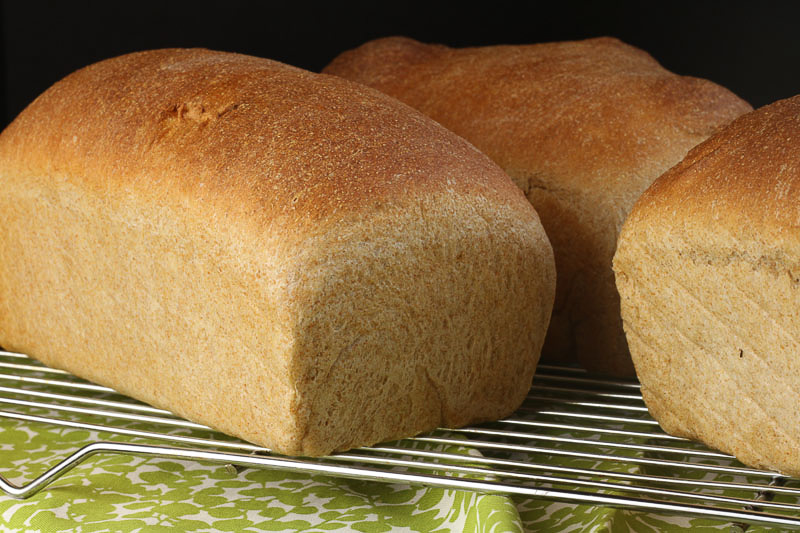
Time to slice the bread... Enjoy, and talk to you soon!
